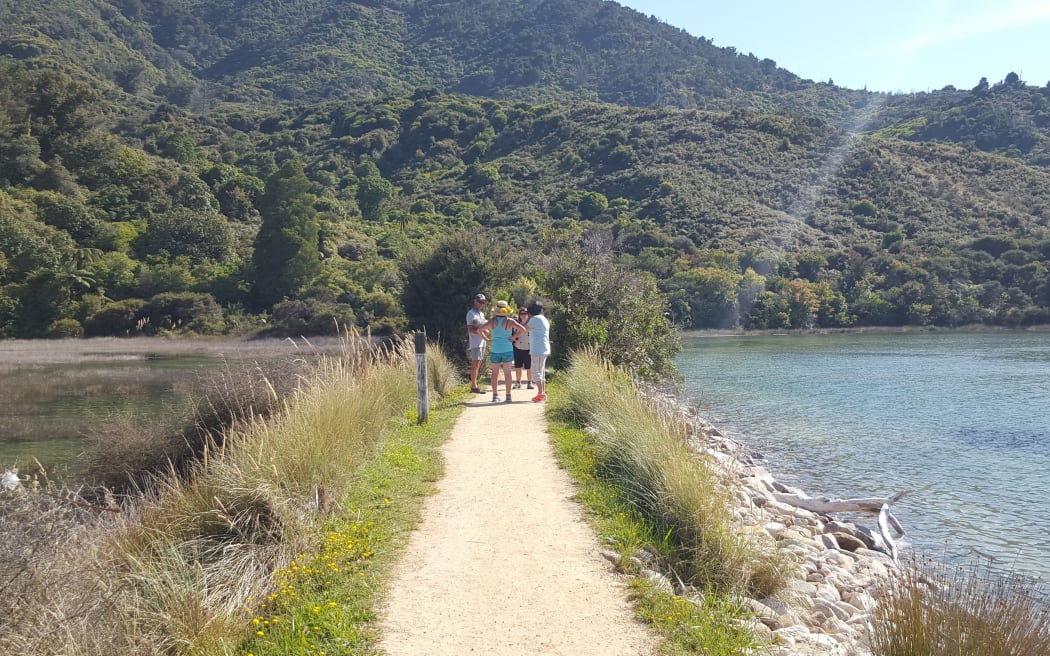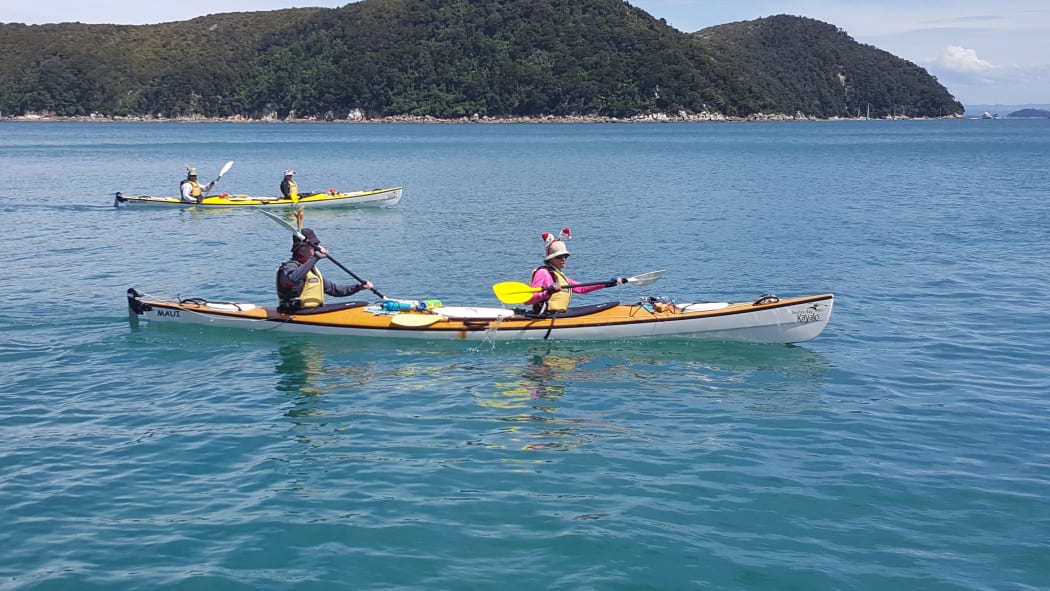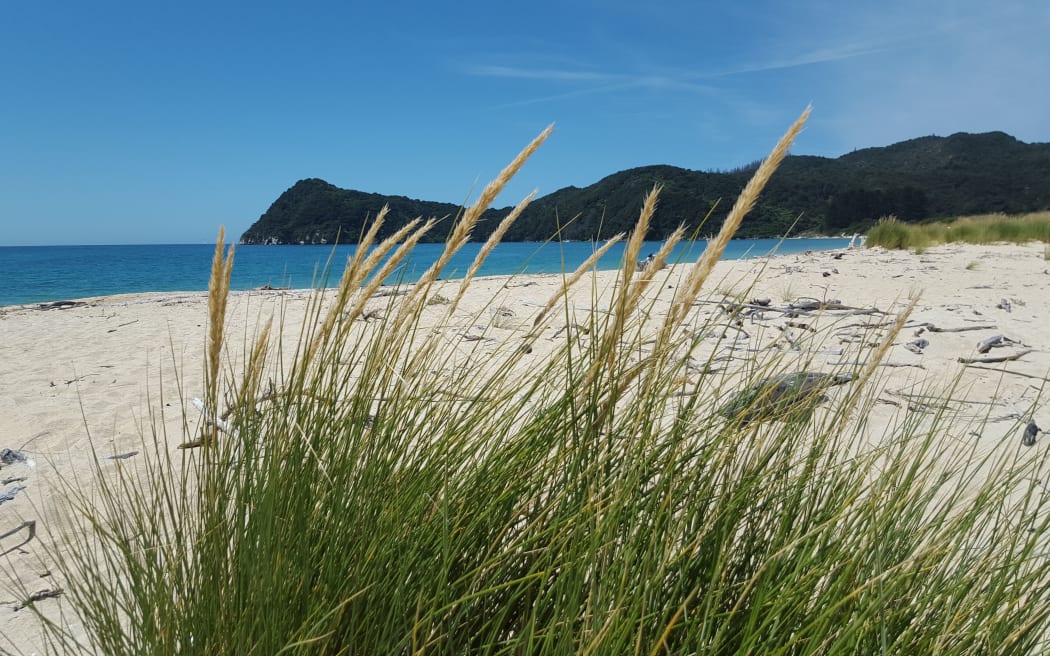Erosion of coastal tracks in the Abel Tasman National Park means some might have to be moved further inland, a Department of Conservation manager says.
Andrew Lamason, who heads the department's Golden Bay office, said slips at the northern head of the park have closed the track there, and forced a re-think on future management.
The Abel Tasman National Park is the country's smallest and one of its most visited spots. More than a quarter of a million people this year alone are expected to flock to the park that flanks the western edge of Tasman Bay.
The head of the region's economic development agency, Mark Rawson, said it has become Nelson-Tasman's main tourist magnet.

The Abel Tasman track. Photo: RNZ / Tracy Neal
"The number one reason why people come to the Nelson-Tasman region, particularly international visitors, is Abel Tasman by a considerable margin."
What sets the park apart is the 60-kilometre walking track that hugs the coastline, from Marahau in the south to Wainui Bay in the north.
And that is also what makes it vulnerable.
This year the sea clawed away the northern edges of the coastal track, closing it to hikers. Mr Lamason said they are considering permanently moving parts of the track inland, in order to keep it open.
He said geotech reports link the slips to the storm surge generated by Cyclone Fehi five weeks ago. A re-think is now needed on how to maintain tracks that are at the mercy of the sea.
"There is no limitless bag of money so we have to think, 'how are we going to sustain this track, where do we have to be prudent and move away from the coast and what areas do we have to say, we can't access there any more'."
The storm surge also came too close for comfort to properties in Torrent Bay - an enclave of privately owned baches and homes mid-way into the park.

Kayakers near Adele Island Photo: RNZ / Tracy Neal
Tim McKay's family has owned a place there for close to a century.
He said after the storm surge from Fehi, some are now talking about raising buildings closest to the beach.
"A lot of places got a lot of sand through, and water. I think it's going to be an ongoing and increasingly serious problem for the bay."
Mr Lamason said they have moved other tracks inland in the past.
"We did something similar at Awaroa when we recognised we were losing land in the front there, so shifted it up on the hill. The outcome is probably some of the best views in the Abel Tasman. We're hoping we can achieve something similar at Anapai."

Awaroa Heads Photo: RNZ / Tracy Neal
Wally Bruce is a pioneer adventure tourism operator who moved from Marlborough to run guided tours on the track for seven years.
"The Abel Tasman undoubtedly has some magic that is not found anywhere else in New Zealand."
He said DOC's plan for the north of the track is disappointing because tourists expect to be able to reach the top end of it.
Mr Bruce said he paid hefty concession fees to operate in the park, and thought they were meant to help cover repair costs.
"I respect what DOC is planning on doing but I think there's a short-term goal and that would be a temporary track around the slip areas, and DOC could put a 'you're there at your own risk' sign up."
Mr Lamason said it was not that simple.
"It looks to the untrained eye you could put a little track there and you'd be fine. On one of the slips, yes, but on the second one we have what's called a gantry walkway bridge and that's on very unstable ground, so much so that we've tied that bridge to a tree and we're hoping to get a heavy-lift helicopter in to take it apart, and take it out completely."
Mark Rawson said DOC has made some focused decisions which the regional agency supports.
"They're trying to get the best resources to come up with a long-term solution that will deliver a better visitor experience."
DOC nationally was allocated $76 million over four years to help with visitor infrastructure in the last Budget.
It currently spends about $800,000 a year on huts, tracks, campsites and maintenance in the Abel Tasman National Park.


